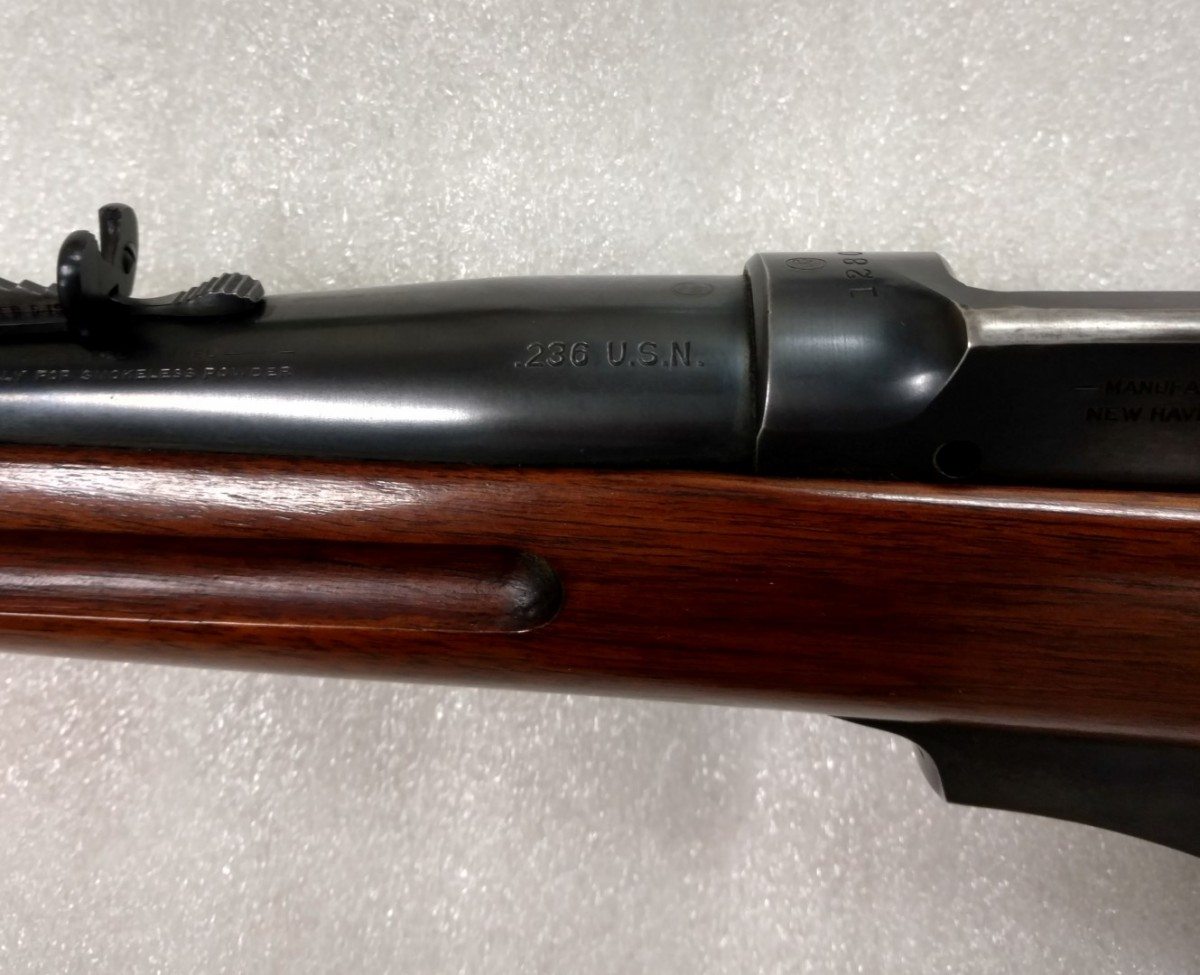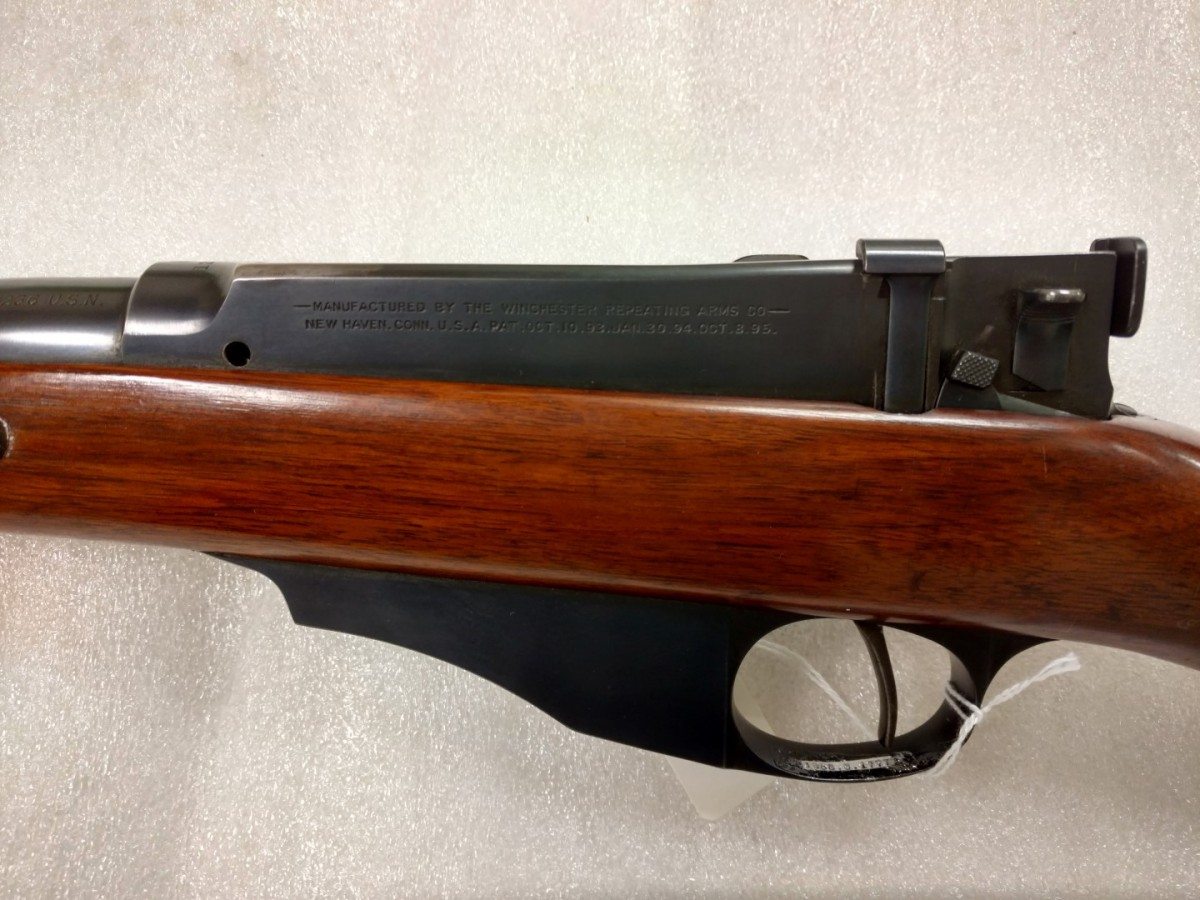These days small bore high velocity cartridges abound, and new ones keep pushing the limits of cartridge performance. The 1890s weren’t that different. The introduction of smokeless powder in the 1880s revolutionized cartridge development. The US Army, and many other militaries, began to move away from large bore calibers like .45-70. The US Army adopted the Krag-Jorgensen in .30-40 in 1892. The Navy with its separate procurement process, took the small bore concept even further. A board met in 1894 to decide on a new rifle for the Navy and Marine Corps, and required that any submissions to the trial be chambered in a cartridge developed specifically for the process, 6mm or .236 Navy.
In stepped Winchester with the Lee Model 1895 Rifle, also called the Winchester Lee and Lee Navy. The design was the work of James Lee who had submitted a rifle to the Navy a decade before with Remington. Lee’s distinctive straight pull bolt action design faced some stiff competition, including a rifle design submitted by Georg Luger, of German pistol fame. His largest fault was not submitting his rifle in the correct caliber. In the end, Lee’s design won and the Navy awarded Winchester a contract for 10,000 rifles for $17.60 each.
The Lee navy fired a .236, 135 grain projectile at just over 2,500 fps. One of the other fastest cartridges of the day, 7mm Mauser, flew around 2,300 fps, and the Army’s .30-40 was a full 500 fps slower than 6mm Navy. While shooters remarked on the accuracy and Winchester advertised 6mm Navy’s capabilities, the high velocity caused problems. Ordnance officials that tested the gun complained that the powder and velocity caused excessive bore erosion. In addition to being high velocity, the Lee Navy used Metford rifling, which was shallower than other rifling and wore out faster. The rifle also had issues with small parts breaking or being lost in the field.
The bore erosion problem was compounded by complaints that small part frequently broke, and by 1900 the Navy had begun to purchase Krag-Jorgensen rifles. The Navy kept the Lee around and it served alongside the Krag until both were replaced by the 1903 Springfield. Winchester also offered a sporting version of the Lee Navy and sold the rifle commercially between government contracts. The Navy placed an additional order of 5,000 rifles. Winchester produced around 20,000 rifles over its short service life.
Recently the Cody Firearms Records Office conducted a survey of Lee Navy serial numbers, partly the inspiration for this post, and noticed that many of the early guns were returned to Winchester for repairs. In the first contract alone over 1700 rifles were returned, some rifles more than once. Winchester also fell behind its production schedule. The Navy included a clause that the first 500 rifles were supposed to be delivered by August 31st, 1896. By that point Winchester only had one complete rifle to send, and less than 200 serialized receivers. The first rifle that they sent was returned for repairs two months later. According to the contract, Winchester owed the navy $100 for every day after August 31st that the first 500 rifles weren’t delivered which did not happen until November 14th. While the rate of returned guns improved over time by the end of the first contract it was still over 17 percent.
While the Lee Navy was an innovative and ambitious design it pushed the limits of available technology. Once the Navy switched to the 1903 the cartridge didn’t last long on the commercial market. By the 1930s it was out of production and the Lee Navy was relegated to small arms history.











